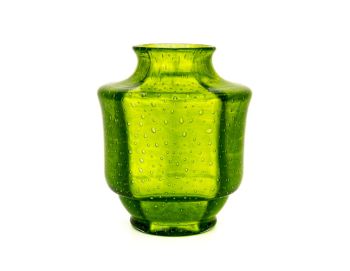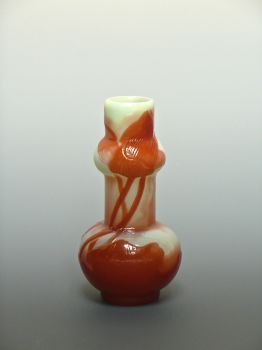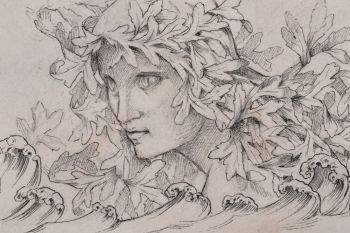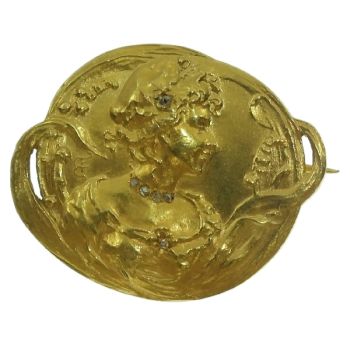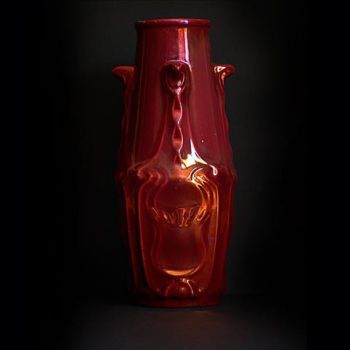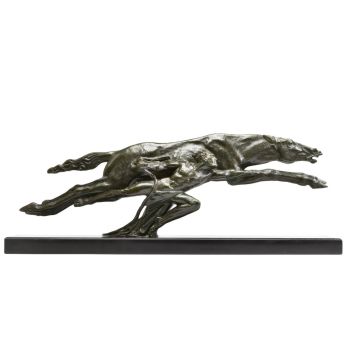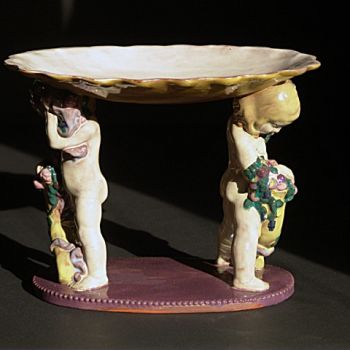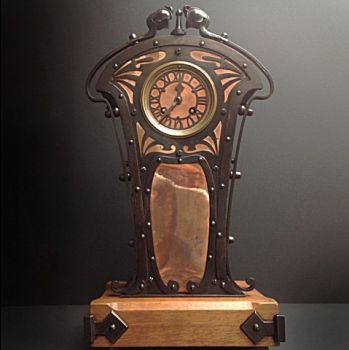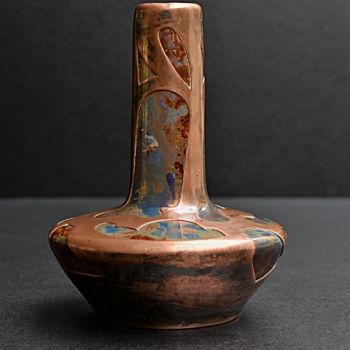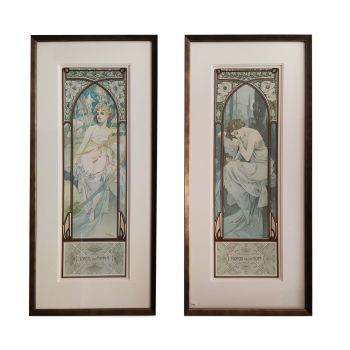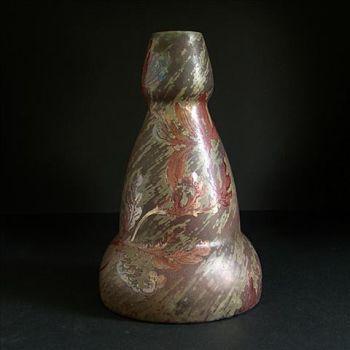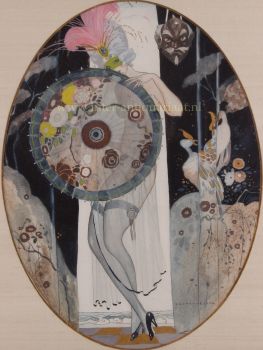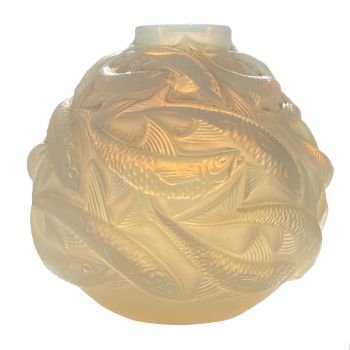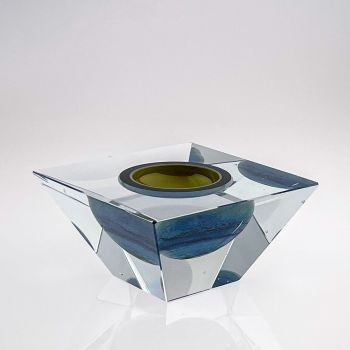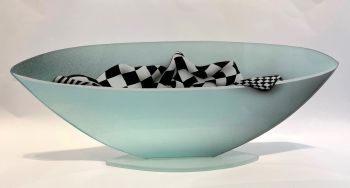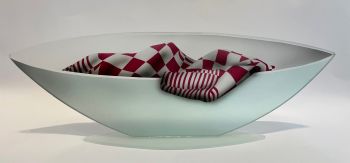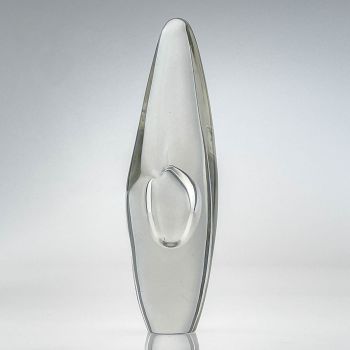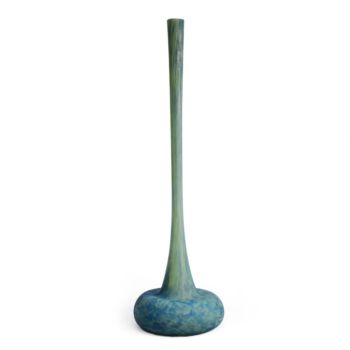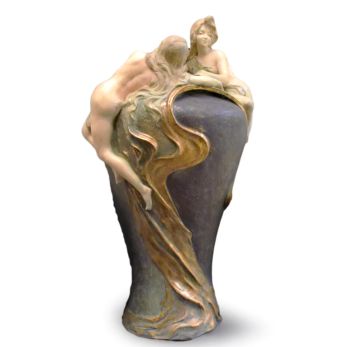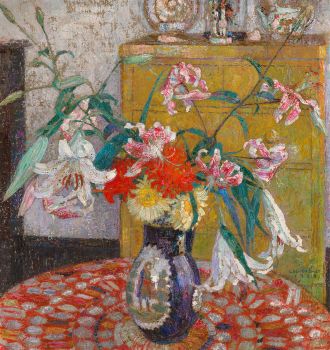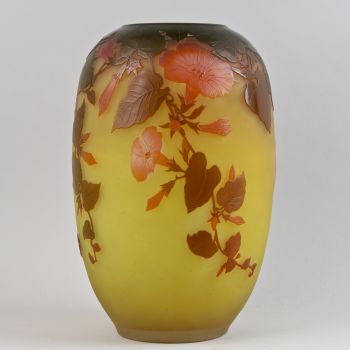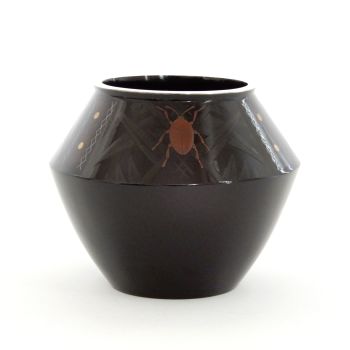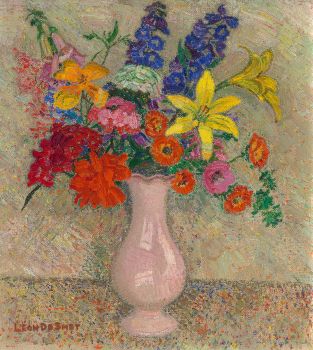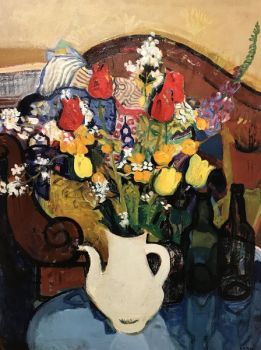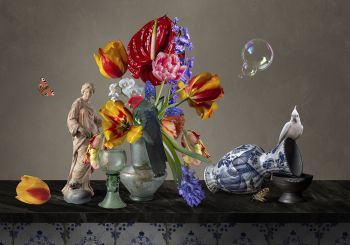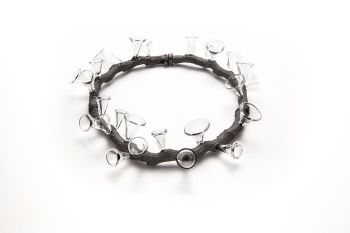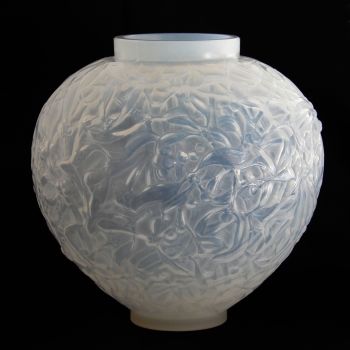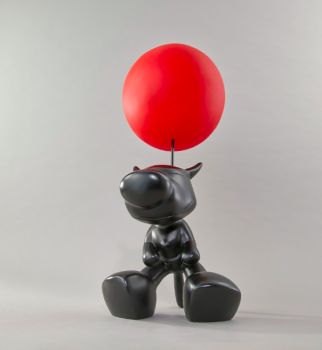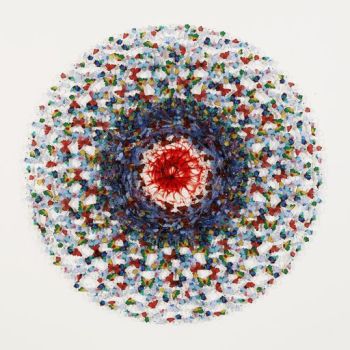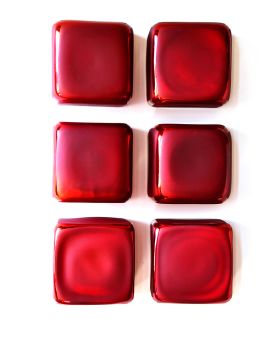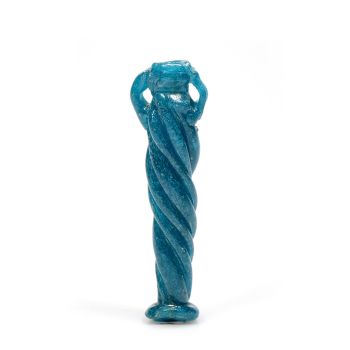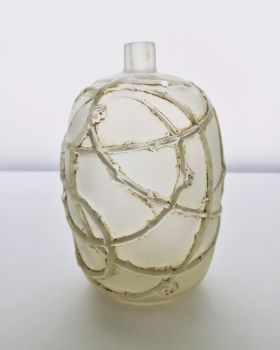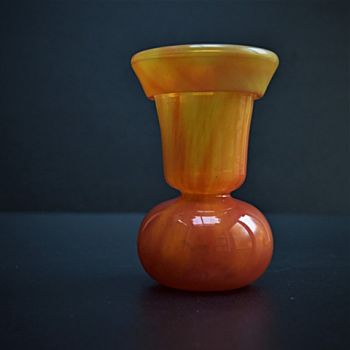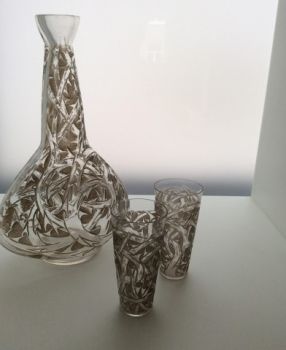Johann Loetz Witwe – Ausfuehrung 146 Titania vase – 1912 1910 - 1919
Johann Loetz (Lötz) Witwe Klostermühle
Copo
14 cm, ø 10 cm
ConditionMint
Preço em pedido
Antiques Emporium
- Sobre arteThe Ausführung 146 vase by Johann Loetz Witwe is a stunning example of early 20th-century glass artistry, showcasing the innovative techniques and aesthetic sensibilities that defined the Art Nouveau movement, particularly within the Titania glass series. Johann Loetz Witwe, a Bohemian glassworks company, was renowned for its iridescent art glass, and Ausführung 146 is one of the exemplary executions that illustrate the company’s mastery in this “Titania” craft.
Ausführung 146 is a variation of the Titania series, which was introduced in 1905. Titania glass features an array of vibrant color combinations. Each piece showcases intricate patterns crafted from steel-gray glass threads, which are applied over the colored base. These patterns categorize the pieces into distinct types of Titania glass. The final touch involves encasing each piece in a layer of clear glass, enhancing its overall elegance.
The creation of a vase in Ausführung 146 requires a high level of skill and precision. The process begins with selecting high-quality glass, which is then blown and shaped by hand. The artisans at Johann Loetz Witwe were known for their expertise in manipulating glass to create intricate designs and textures. - Sobre artista
A vidraria Loetz existiu em Klostermuhle, Áustria, por pouco mais de cem anos, começando em 1840. Mas seu apogeu foi durante a vida de Max Ritter Von Spaun, neto do original Johann Loetz que fundou a empresa.
Von Spaun assumiu a empresa em 1879 e a dirigiu até 1908, um ano antes de sua morte. Ele foi auxiliado por Eduard Prochaska, seu especialista técnico, e juntos eles inventaram, projetaram e produziram uma série de novos e maravilhosos tipos de vidro, tirando várias patentes e ganhando prêmios em todas as maiores exposições mundiais durante a década de 1890 e os primeiros anos de o novo século.
A empresa Loetz estava entre os líderes em design Art Nouveau e especialmente em vidro de arte irridescente. O vidro "Papillon", como o vaso à esquerda, é às vezes conhecido hoje como vidro "manchado de óleo". Outro colorante favorito de Loetz era o vidro irradiado com trilhas puxadas, chamado de vidro "Fenômeno".
Havia vasos irritados com fitas de cores metálicas enroladas na superfície, e muitos desenhos espetaculares com rastros aplicados de belas cores, ou simplesmente puxados para fora do corpo do vidro para formar alças ou decoração.
Por volta de 1900, a empresa começou a colaborar com designers externos, e alguns grandes artistas criaram peças para Lotz, notavelmente Joseph Hofmann, Koloman Moser, Maria Kirchner e Hofstatter.
Em 1908, Loetz foi adquirido pelo filho de Max Von Spaun, também chamado de Max, e embora tivesse dificuldades financeiras (indo à falência em 1911 e novamente em 1931), havia vários grandes designers cujo trabalho foi produzido por Loetz durante aqueles anos e através da arte período deco. Entre eles, Adolf Beckert e Michael Powolny.
Você está interessado em comprar esta obra de arte?
Artwork details
Related artworks
Johann Loetz (Lötz) Witwe Klostermühle
Johann Loetz Witwe - Phänomen Genre 7773 – Orange1900 - 1910
Preço em pedidoAntiques Emporium
1 - 4 / 8- 1 - 4 / 24
Frères Daum
Daum Nancy – “Paysage Soleil Couchant” vase with two applied handles1900 - 1910
Preço em pedidoAntiques Emporium
Amalric Walter
Amalric Walter & Henri Bergé – Crabe plumier1920 - 1929
Preço em pedidoAntiques Emporium
1 - 4 / 24Artista Desconhecido
Japanese art deco lacquervase with Scarab beetle motif1920 - 1950
Preço em pedidoDille Art
Johann Loetz (Lötz) Witwe Klostermühle
Johann Loetz Witwe - Phänomen Genre 7773 – Orange1900 - 1910
Preço em pedidoAntiques Emporium
1 - 4 / 24Amalric Walter
Amalric Walter & Henri Bergé – Crabe plumier1920 - 1929
Preço em pedidoAntiques Emporium
Artista Desconhecido
Uma rara filigrana a taça retortoli1550 - 1600
Preço em pedidoPeter Korf de Gidts - Antiquairs
1 - 4 / 24Amalric Walter
Amalric Walter & Henri Bergé – Crabe plumier1920 - 1929
Preço em pedidoAntiques Emporium
Johann Loetz (Lötz) Witwe Klostermühle
Johann Loetz Witwe - Phänomen Genre 7773 – Orange1900 - 1910
Preço em pedidoAntiques Emporium
Frères Daum
Daum Nancy – “Paysage Soleil Couchant” vase with two applied handles1900 - 1910
Preço em pedidoAntiques Emporium
1 - 4 / 12

















